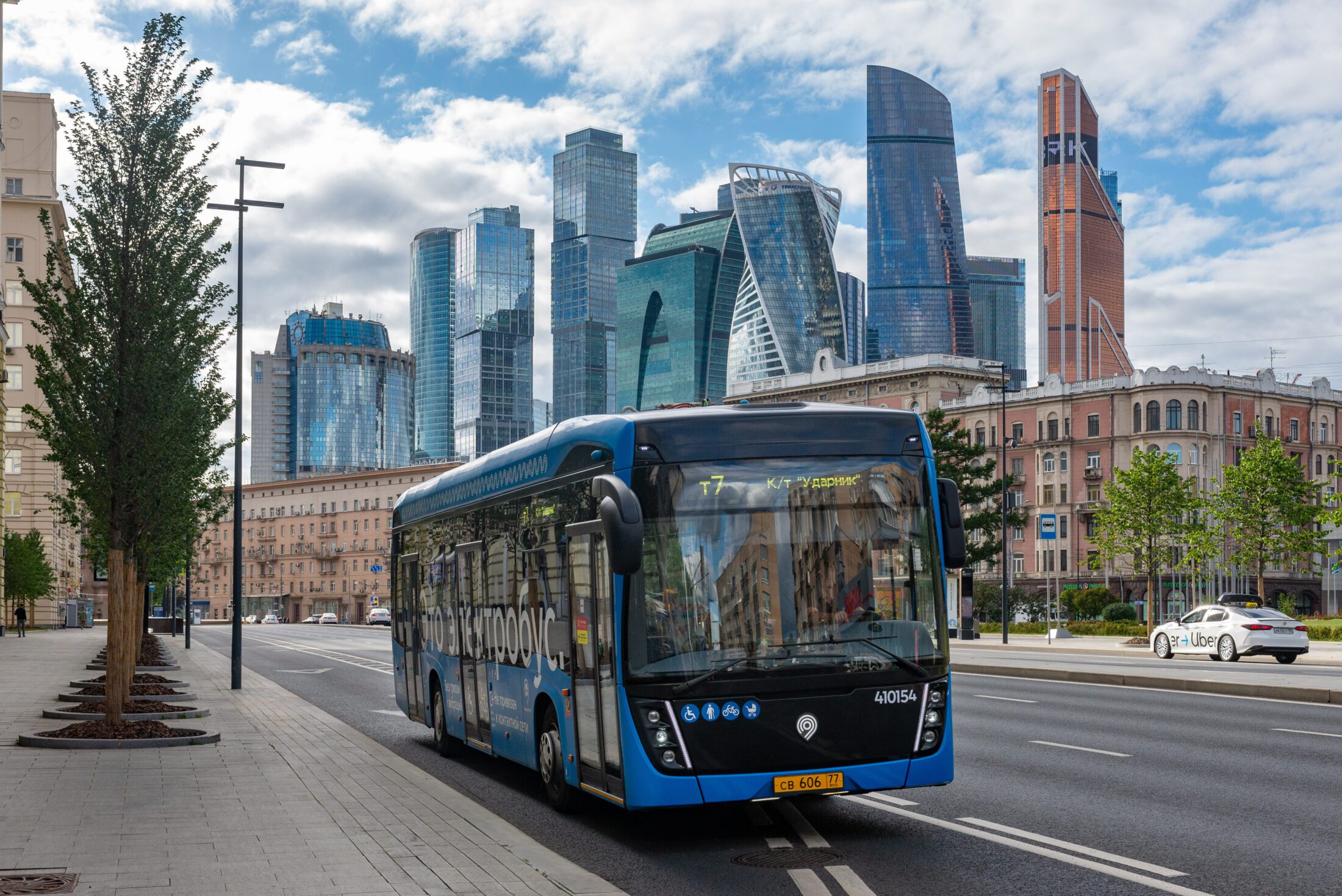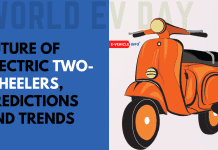
Today Moscow is focused on eco-friendly transport and is keeping up with worldwide electric vehicle market trends. Improving the environmental situation in the city is one of the most important priorities of the Moscow Government. The city continues to adapt infrastructure and public transport in accordance with the Green Agenda. Moscow’s eco-friendly transport fleet is considered to be the largest in Europe.
Electric buses were launched in Moscow 4 years ago, in 2018.
In the meantime, this innovative surface transport has proved its efficiency. Today more than 1 thousand electric buses run on 79 bus routes, carrying about 400 thousand passengers on the daily basis. In 4 years, electric buses have run 100 million km, and transported more than 226 million passengers, 72 million passengers of which have been carried in 2022.
Moscow electric buses are very convenient and reliable. Each electric bus carries about 85 people. This transport is also convenient for passengers with disabilities: electric buses are provided with a low floor, ramps, and accumulation areas. Besides, electric buses are equipped with gadget chargers on handrails, climate control systems, and media screens. Safety is ensured by an automatic information system, smoke and temperature sensors, alarm buttons as well as a video surveillance system.
Moreover, they perfectly deal with temperature extremes. For the fourth consecutive winter season, the innovative transport has been operating without any interruptions. The temperature range of its work is from -40 to +40 degrees Celsius. Batteries are equipped with a temperature control system to prevent vehicles from overheating in summer and freezing in winter.
Moreover, Moscow is now actively developing charging infrastructure. Nowadays there are 202 charging structures in the city. Electric buses are charged in 6-10 minutes which is enough to ride 40-50 km. By the end of 2023, this number will increase up to 500 stations.
Table of Contents
Ecology- Electric Bus
The main advantage of electric buses in comparison with buses is environmental friendliness. Replacing one diesel bus with an electric one reduces CO2 emissions by 60.7 tons per year. The electric bus is 30% quieter than a bus and has practically no vibrations and noise while driving. The increase in the number of electric buses would allow for the reduction of emissions by 86 thousand tons in 2022.
The innovative SVARZ eco-plant by KAMAZ
Moscow is actively developing eco-transport – the assembly of the electric buses began in April 2021 on the basis of the SVARZ eco-plant. In May 2021, Moscow electric buses by the SVARZ eco-plant hit the city routes for the first time.
About 20 assembly operations are performed on Moscow SVARZ, which is about 20% of the work on each machine. The main types of work are the setup of all systems, the installation of current collectors, and traction equipment, which is the heart of each machine. About 40% of all electric bus production operations take place at SVARZ. These operations are the most expensive and account for about 60% of the total cost of producing an electric bus.
Many young specialists are actively involved in the assemblage of e-buses: there are currently more than 100 specialists and another 100 workplaces will be created by 2023.
Upgraded KAMAZ electric buses with a fully electric heating system

Moscow received innovative KAMAZ electric buses with fully electric heating systems. The system provides optimal temperature in the cabin as well as reduces the number of harmful emissions into the atmosphere. The upgraded e-buses have modernized batteries that help to ride 80-90 km without charging. Besides, the front route indicator has become larger and the floor covering is now even stronger. The new KAMAZ e-buses are equipped with four validators instead of three, thus it will be more convenient for the passengers to pay easier and faster for their daily trips. The e-bus cabin is also provided with adaptive light: it depends on the time of the day and changes from cold light to warm one. This created a favorable and relaxed atmosphere inside the e-bus.
22 new Russian-made KAMAZ electric buses have been delivered to the SVARZ eco-plant. The route number has become more noticeable and the doors open faster. Besides, we have installed the electric heater in the upgraded e-buses. New electric buses arrived in the parks in June. After the final completion on the basis of the SVARZ eco-plant, new KAMAZ electric buses have hit the city routes for the first time.
The articulated electric buses
In January Moscow has begun the testing of the articulated electric buses by KAMAZ and GAZ group manufacturers.
The new articulated electric bus is the first electric bus in Moscow with an electric heater. The vehicle has space for 135 passengers, a range of 90 kilometers, and a powerful battery. The charging process takes 20 minutes. The articulated e-bus is equipped with climate control systems, increased safety in controlling the vehicle, automatic braking, and a full side view. This makes the electric bus ride environmentally friendly, safe, and comfortable.
The testing of the articulated e-buses allows Moscow to carefully analyze all the indicators and decide on the further operation of this surface public transport in the city.

Future projects
In the upcoming years, we will continue to actively develop the fleet of electric vehicles, introducing innovative developments into the urban infrastructure and adapting new trends to it.
In November we started the test of a bus-down pantograph that provides top-down contact with the electric bus. It is located on the charging station, while contact rails are situated on the roof of the electric bus. The pantograph lowers onto the contact rails and charges the vehicle. This kind of innovative technology will lighten the electric bus and reduce the cost of e-buses.
In addition, the plans for the future include the launch of a pilot project of multi-output charging stations. With this kind of charging infrastructure, it will be able to charge 5-6 electric pantographs at the same time, which will significantly speed up not only the charging of e-buses but also their operation on the bus routes.
In general, Moscow sets the trend for modern and eco-friendly surface public transport. Many mechanisms have already begun to be implemented in Russian regions and beyond. We are actively developing sustainable surface public transport so that the quality of life in the city becomes even higher. We will continue to implement electric buses into the ecosystem of the city.






